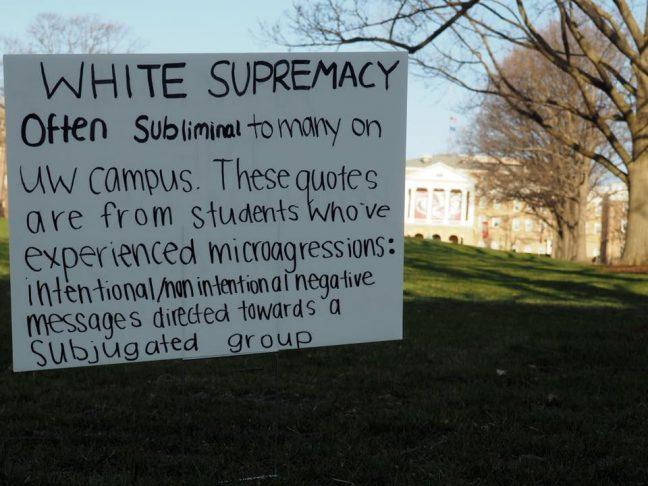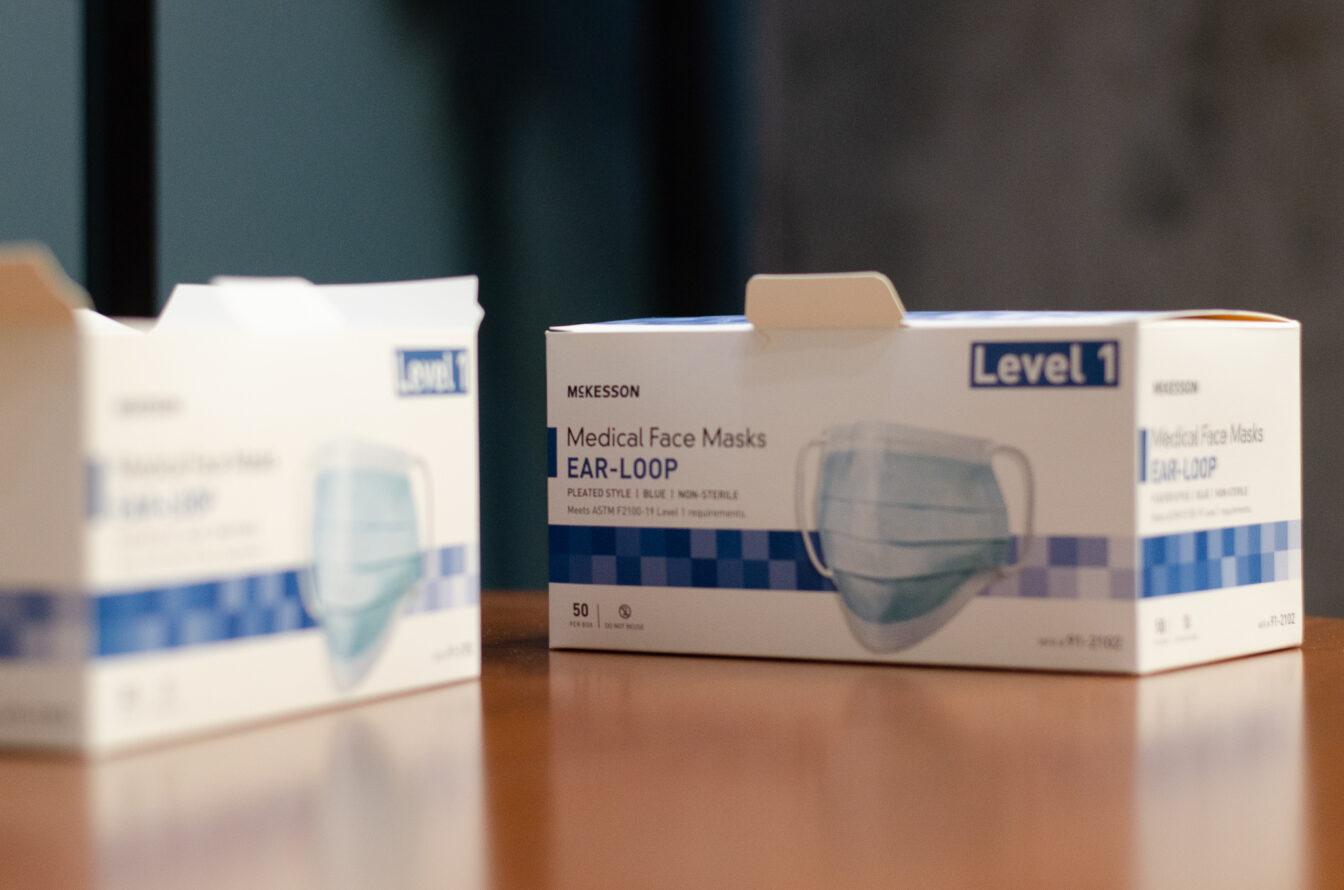Students of the contentious African cultural studies class “The Problem of Whiteness” created a visual display on Bascom Hill Monday morning, drawing attention to the prevalent — but often subtle — issues of white supremacy, white privilege and racism.

University of Wisconsin student Caitlin Attaway, the main organizer of the display, said Bascom Hill was the perfect spot for the display because its location is central to campus and allows for a significant amount of people to view the display. The other group members included Falicia Elenberg, Erika Hartzheim, Karen Wong and Charlotte London.
“Myself and the other members of my group — we feel like this is a prevalent issue and we need to combat this norm,” Attaway said. “We were assigned to go out and expose the real instances of white supremacy in our lives.”
Attaway and the other group members used quotes and anecdotes from UW students to cover the signs placed on Bascom. Many of the quotes describe microaggressions individual students have experienced while on the UW campus.
Women feel extra pressure to prove themselves in male-dominated majors
Some signs on the hill read, “This is not your country go, back to Mexico,” “Are you here legally?” and “Why does everything have to be about race?”

Attaway said nothing specifically prompted the display, but that the lack of conversation around the topic is the reason a display like this is necessary.
“We felt the discussion two years ago has not been completed,” Attaway said, referring to the hashtag #TheRealUW that spread across campus to bring attention to the experiences of students of color and other historically marginalized groups on campus.
Monica Styles, a UW graduate student and TA, viewed the display as an artistic political statement made to start the conversation.
“From my experience, being quiet is not the solution,” Styles said. “You may make enemies, but addressing these hard truths is necessary — even if makes other uncomfortable.”

Despite the importance of sharing student experiences, Attaway said she and her group were expecting some backlash.
“We want people to criticize it and start a conversation,” Attaway said.
Styles said she faced tough conversations with her students Monday. Many in the classroom expressed their belief that blaming whiteness is problematic.
In an attempt to open the discussion, Styles said she tries to provide examples from different points of view and get them to question views they have readily accepted.
“As an instructor, I feel limited in how much I can express of my own opinions in class because I don’t want to alienate my students,” Styles said. “It’s hard to know how to confront white people about racism but ignoring the issue or being silent are not options either.”

Attaway said there are three things she believes people can do to combat this issue on campus, starting with simply becoming aware of what a microaggression is.
Confronting #TheRealUW: Marginalized students reveal experiences of an unwelcoming campus
As a part of the display, multiple signs on the hill displayed the definition — “intentional/non-intentional negative messages directed towards a subjugated group” — for all to see.
“People need to be cognizant and willing to take criticism because words and phrases do have meaning,” Attaway said.
Being willing to correct or rephrase a comment in a more respectful manner is important, she said.
Attaway said continuing conversations with friend groups and going out and making a change are the remaining two of the three actions people can take to combat the issue. She encourages students and staff to continue the conversation online by posting with the hashtags #RealUW and #BreakingWhiteSupremacy.














